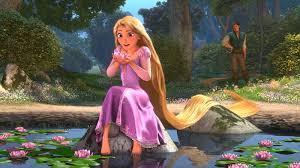
I have talked to many screenwriters over the years who lament the idea of the 3-act structure and the supposed restrictions it places on writers and the screenwriting process. This is a simplistic view of what story structure really is. There is a reason that the 3-act structure (really 4-act structure) has become the industry standard and why, with few exceptions, screenplays have been written this way for nearly a century.
I have read a lot of screenplays lately that are lacking tight story structure. It’s no coincidence that those scripts have another large issue. The hero on those screenplays often lacks a clear goal. Without a clear goal, we don’t know what the Hero is working towards, so it’s impossible to craft a tight story structure. That probably sounds like Screenwriting 101 to most screenwriters, but you would be surprised how often it comes up when I’m reading a screenplay.
Put it this way. The structure of the story marks the progress the Hero makes toward accomplishing her goal. The first act of your screenplay is the exposition. That’s when we learn who the Hero is, what she needs to accomplish, and who is trying to stop her. The first act ends with the Hero committing to the adventure in an attempt to achieve whatever that goal is.

Act II is the conflict. Whoever is trying to stop the Hero works hard in the second act to prevent the Hero from accomplishing her goal. At the midpoint of Act II, the stakes are often raised. Perhaps it looks like the Hero will get what she wants, and the antagonist needs to make an adjustment. Whatever it is, the story progresses based on how close the Hero is to getting what she wants. Then Act II ends with the all-is-lost moment. Despite earlier successes, it all comes crashing down and the Hero has lost everything, usually due to some flaw she was unable to overcome.
That moves us to Act III, the Resolution. Learning from her past mistakes and having found the strength to overcome whatever flaw or weakness was blocking her, the Hero makes that last push and finally accomplishes her goal by the end. Or she doesn’t, depending on the kind of story you’re telling. The point is that story structure and character development go hand-in-hand. The best characters have inner flaws to go along with their outer goals. The structure of the story shows their progress towards those goals, but the character’s weakness plays a part in how the structure plays out in the best screenplays.

You cannot have a tight story structure in your screenplay without a Hero who has depth. Conversely, without that solid story structure, there is no organic way to get your character to grow and experience a satisfying character arc. The two feed off of each other, and they need each other. That is the first step for a screenwriter to maximize the potential in their screenplay.
Are you writing a screenplay, and you’re struggling to find the structure of it or to determine what the hero’s true goal is? Monument scripts can help. Click here to see our coverage options and how we can help you improve your screenplay.